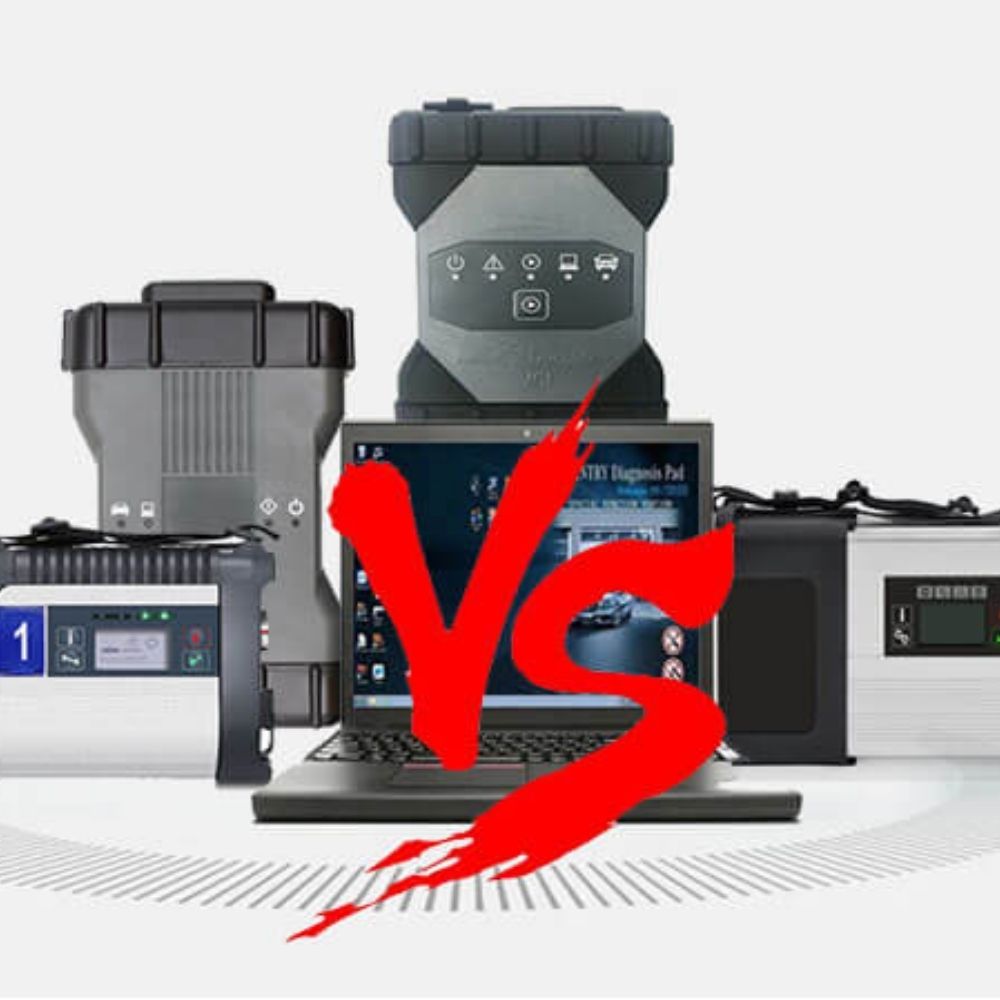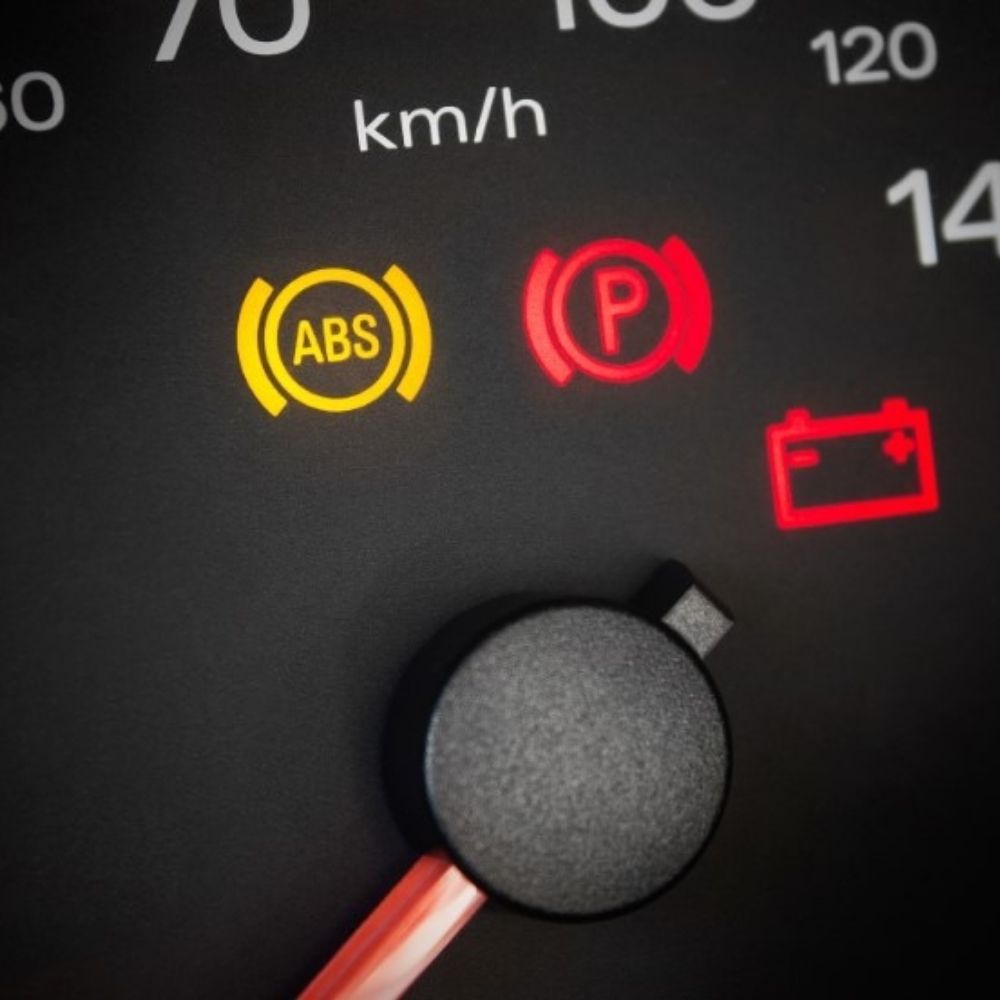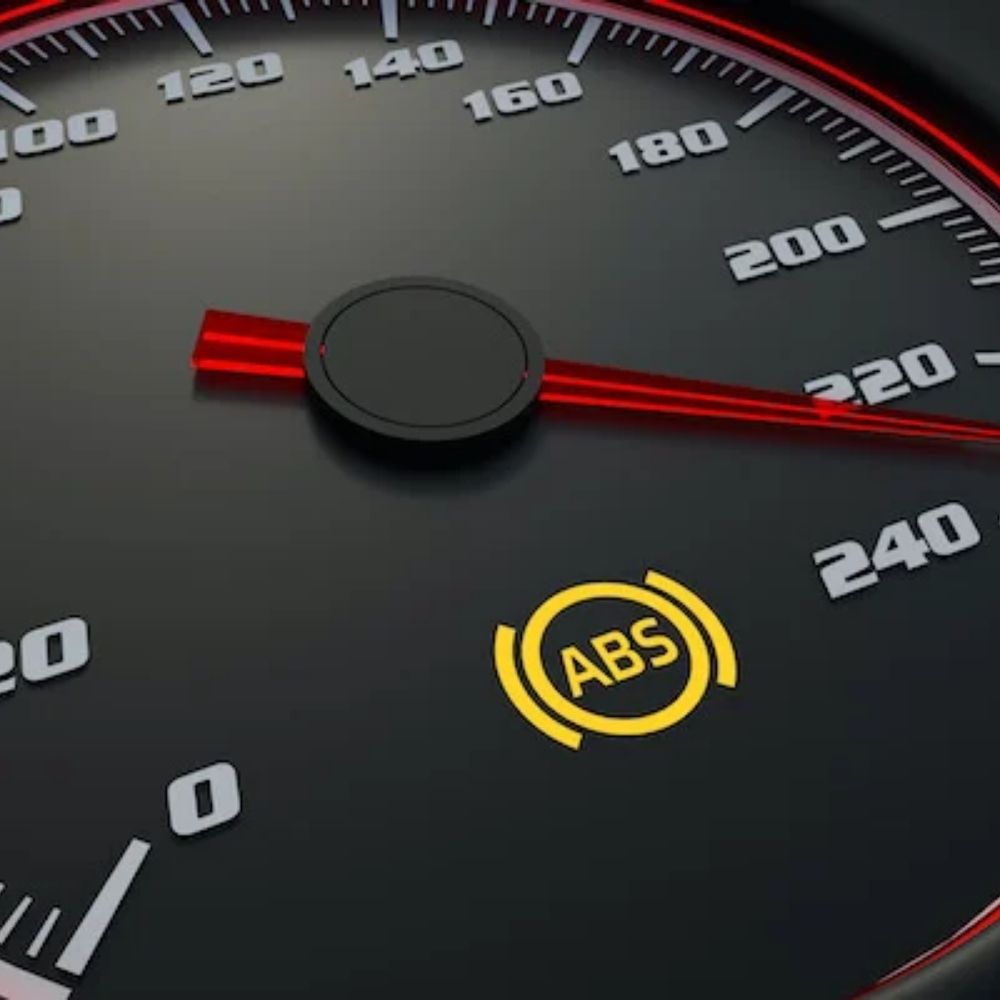
**BMW 2A87 Fault Code: What Does It Really Mean?**
Contents
- 1. What Does the BMW 2A87 Fault Code Mean?
- 2. What Are the Common Causes of the 2A87 Fault Code?
- 3. How Do I Diagnose the BMW 2A87 Fault Code?
- 4. What Tools Are Needed to Diagnose the 2A87 Code?
- 5. How Can AutoExplain.com Help with Diagnosing the 2A87 Code?
- 6. What Are the Solutions for the BMW 2A87 Fault Code?
- 7. What Are the Steps to Replace a VANOS Solenoid?
- 8. How Do Worn Camshaft Bearing Ledges Cause the 2A87 Code?
- 9. How Important Is Oil Quality for the VANOS System?
- 10. Can a Stretched Timing Chain Cause the 2A87 Code?
- 11. What Is the Role of Camshaft Gear Bolts in the VANOS System?
- 12. How Do I Check the Camshaft Bearing Ledges for Wear?
- 13. What Is the Function of VANOS Non-Return Valves?
- 14. Can a Faulty ECU Cause the 2A87 Code?
- 15. What Is the Cost to Repair a 2A87 Fault Code?
- 16. How Can I Prevent the 2A87 Fault Code?
- 17. What Are the Benefits of Variable Valve Timing (VANOS)?
- 18. Is It Safe to Drive with the 2A87 Fault Code?
- 19. Can AutoExplain.com Program a New VANOS Unit?
- 20. What Other BMW Fault Codes Are Related to the VANOS System?
- 21. How Can AutoExplain.com Help with Other BMW Repairs?
- 22. Where Can I Find Reliable BMW Repair Information?
- 23. What Is the Lifespan of a VANOS Unit?
- 24. What Are the Symptoms of a Failing VANOS Unit?
- 25. How Can I Test the VANOS Solenoids with a Multimeter?
- 26. What Is the Best Oil Viscosity for My BMW’s VANOS System?
- 27. Where Can I Buy OEM BMW Parts for My VANOS Repair?
- 28. How Often Should I Replace My BMW’s Timing Chain?
- 29. What Are the Risks of Ignoring the 2A87 Fault Code?
- 30. How Can AutoExplain.com Help Me Understand BMW Diagnostic Data?
The Bmw 2a87 Fault Code indicates a mechanical issue with the exhaust VANOS system, but determining the exact cause requires careful diagnosis. AutoExplain.com can help you pinpoint the problem and guide you through the repair process, saving you time and money. Understanding VANOS system failures and their repair solutions is key.
1. What Does the BMW 2A87 Fault Code Mean?
The BMW 2A87 fault code signifies a “VANOS exhaust mechanically jammed” error. This means the Engine Control Unit (ECU) has detected a problem with the exhaust side of the Variable Nockenwellen Steuerung (VANOS) system, indicating that the exhaust camshaft is not adjusting as expected. While the code points to a mechanical issue, identifying the root cause requires a systematic approach, and AutoExplain.com can provide expert guidance.
- VANOS System: VANOS (Variable Nockenwellen Steuerung) is BMW’s version of variable valve timing. It adjusts the timing of the intake and exhaust valves, improving engine performance, fuel efficiency, and emissions.
- Exhaust VANOS: This specifically refers to the VANOS unit that controls the exhaust camshaft timing.
- Mechanically Jammed: This suggests that the VANOS unit or its related components are physically obstructed or malfunctioning, preventing proper camshaft adjustment.
2. What Are the Common Causes of the 2A87 Fault Code?
Several factors can trigger the 2A87 fault code, ranging from simple issues to more complex mechanical failures. Here’s a breakdown of the common culprits:
- VANOS Solenoid Malfunction: A faulty VANOS solenoid can prevent proper oil flow to the VANOS unit, hindering its ability to adjust the camshaft timing.
- Oil Supply Issues: Low oil level, dirty oil, or a clogged oil filter can restrict oil flow to the VANOS system.
- VANOS Unit Failure: The VANOS unit itself can fail due to wear and tear, internal damage, or seal deterioration.
- Camshaft Bearing Ledge Wear: Worn camshaft bearing ledges can cause oil pressure loss, affecting VANOS performance.
- Timing Chain Issues: A stretched timing chain or faulty chain tensioner can disrupt the synchronization between the crankshaft and camshafts, leading to VANOS errors.
- Camshaft Gear Bolt Issues: Loose or broken bolts on the camshaft gear can cause the gear to slip, affecting valve timing.
- Non-Return Valve Failure: These valves maintain oil pressure in the VANOS system. Failure can lead to pressure loss and VANOS malfunction.
- ECU Issues: In rare cases, a faulty ECU can misinterpret sensor data and trigger the 2A87 code.
3. How Do I Diagnose the BMW 2A87 Fault Code?
Diagnosing the 2A87 fault code requires a methodical approach to isolate the root cause. Here’s a step-by-step guide:
- Read the Fault Code: Use an OBD-II scanner to confirm the 2A87 code and check for any other related fault codes that might provide additional clues.
- Check Engine Oil Level and Condition: Ensure the engine oil is at the correct level and is clean. Low or dirty oil can affect VANOS performance.
- Inspect VANOS Solenoids: Remove and inspect the VANOS solenoids for debris or damage. Clean them with electrical contact cleaner and test their functionality using a multimeter.
- Swap VANOS Solenoids: Swap the intake and exhaust VANOS solenoids to see if the fault code changes to the intake side (2A82). If it does, the solenoid is faulty.
- Check VANOS Non-Return Valves: Remove and inspect the non-return valves for clogs or damage. Clean or replace them as needed.
- Inspect Camshaft Bearing Ledges: Remove the valve cover and inspect the camshaft bearing ledges for wear or damage.
- Check Camshaft Gear Bolts: Inspect the camshaft gear bolts for looseness or breakage.
- Check Timing Chain: Inspect the timing chain for wear or stretching. Check the chain tensioner for proper operation.
- Perform a VANOS Actuation Test: Use a diagnostic tool to perform a VANOS actuation test to see if the VANOS unit is responding correctly.
- Check Oil Pressure: Use a gauge to test the oil pressure to the VANOS unit. Low oil pressure can indicate a problem with the oil pump or oil passages.
4. What Tools Are Needed to Diagnose the 2A87 Code?
Having the right tools can make the diagnostic process much easier and more efficient. Here’s a list of essential tools:
- OBD-II Scanner: To read and clear fault codes.
- Multimeter: To test the electrical functionality of the VANOS solenoids.
- Socket Set and Wrenches: For removing and installing various components.
- Torque Wrench: To ensure proper torque when tightening bolts.
- Valve Cover Gasket Set: For replacing the valve cover gasket after removing the valve cover.
- Inspection Mirror: To inspect hard-to-reach areas.
- Oil Pressure Gauge: To test the oil pressure to the VANOS unit.
- Diagnostic Software (e.g., ISTA, INPA): For advanced diagnostics and VANOS actuation tests.
5. How Can AutoExplain.com Help with Diagnosing the 2A87 Code?
AutoExplain.com offers remote diagnostic support to help you accurately identify the cause of the 2A87 fault code. Our expert technicians can guide you through the diagnostic process, interpret diagnostic data, and provide troubleshooting advice. Contact us via WhatsApp at +1(936)2896695 or email at [email protected] for assistance.
6. What Are the Solutions for the BMW 2A87 Fault Code?
The solution for the 2A87 fault code depends on the underlying cause. Here’s a breakdown of common solutions:
- Replace Faulty VANOS Solenoid: If the VANOS solenoid is malfunctioning, replace it with a new OEM or high-quality aftermarket solenoid.
- Oil Change: If the engine oil is dirty or low, perform an oil change with the correct type and viscosity of oil.
- Replace VANOS Unit: If the VANOS unit is damaged or worn, replace it with a new unit.
- Replace Camshaft Bearing Ledges: If the camshaft bearing ledges are worn, replace them with new ones.
- Replace Timing Chain and Tensioner: If the timing chain is stretched or the tensioner is faulty, replace them with new components.
- Tighten or Replace Camshaft Gear Bolts: If the camshaft gear bolts are loose or broken, tighten or replace them as needed.
- Replace Non-Return Valves: Replace any faulty non-return valves to maintain proper oil pressure in the VANOS system.
- ECU Repair or Replacement: In rare cases, if the ECU is faulty, it may need to be repaired or replaced.
7. What Are the Steps to Replace a VANOS Solenoid?
Replacing a VANOS solenoid is a relatively straightforward process. Here’s a step-by-step guide:
- Gather Your Tools: You’ll need a socket set, wrench, screwdriver, and a new VANOS solenoid.
- Disconnect the Battery: Disconnect the negative terminal of the battery to prevent electrical damage.
- Locate the VANOS Solenoids: The VANOS solenoids are typically located on the front of the engine, near the valve cover.
- Disconnect the Electrical Connector: Disconnect the electrical connector from the VANOS solenoid.
- Remove the Solenoid: Use a wrench or socket to remove the VANOS solenoid from the engine.
- Install the New Solenoid: Install the new VANOS solenoid, ensuring it is properly seated.
- Connect the Electrical Connector: Connect the electrical connector to the new VANOS solenoid.
- Reconnect the Battery: Reconnect the negative terminal of the battery.
- Clear the Fault Code: Use an OBD-II scanner to clear the 2A87 fault code.
- Test the Engine: Start the engine and check for any new fault codes or unusual noises.
8. How Do Worn Camshaft Bearing Ledges Cause the 2A87 Code?
Worn camshaft bearing ledges can cause a loss of oil pressure to the VANOS unit. The camshaft bearing ledges provide a smooth surface for the camshaft to rotate on, and they also help to maintain oil pressure within the VANOS system. When these ledges become worn, they can no longer effectively seal the oil passages, leading to a drop in oil pressure. This reduced oil pressure can prevent the VANOS unit from functioning correctly, triggering the 2A87 fault code.
9. How Important Is Oil Quality for the VANOS System?
Oil quality is critical for the proper functioning of the VANOS system. Clean, high-quality oil ensures that the VANOS unit receives the necessary lubrication and oil pressure to operate effectively. Dirty or low-quality oil can contain contaminants that clog the small oil passages within the VANOS unit, hindering its ability to adjust the camshaft timing. Regular oil changes with the correct type and viscosity of oil are essential for maintaining the health of the VANOS system.
10. Can a Stretched Timing Chain Cause the 2A87 Code?
Yes, a stretched timing chain can cause the 2A87 code. The timing chain synchronizes the rotation of the crankshaft and camshafts, ensuring that the valves open and close at the correct time. When the timing chain stretches, it can alter the timing of the camshafts, leading to VANOS errors. A stretched timing chain can also cause the chain tensioner to malfunction, further disrupting the timing and triggering the 2A87 fault code.
11. What Is the Role of Camshaft Gear Bolts in the VANOS System?
The camshaft gear bolts secure the camshaft gear to the camshaft. These bolts must be properly tightened to ensure that the gear does not slip or move relative to the camshaft. If the camshaft gear bolts are loose or broken, the gear can slip, causing the valve timing to be incorrect. This can lead to VANOS errors, including the 2A87 fault code.
12. How Do I Check the Camshaft Bearing Ledges for Wear?
Checking the camshaft bearing ledges for wear requires removing the valve cover and inspecting the surfaces that the camshaft rotates on. Look for signs of scoring, grooves, or excessive wear. You can use a small mirror and a flashlight to inspect hard-to-reach areas. If you find significant wear or damage, the camshaft bearing ledges should be replaced.
13. What Is the Function of VANOS Non-Return Valves?
VANOS non-return valves, also known as check valves, are small valves that maintain oil pressure within the VANOS system. These valves prevent oil from flowing back out of the VANOS unit when the engine is turned off. By maintaining oil pressure, the VANOS system can respond more quickly and efficiently when the engine is started. If the non-return valves fail, oil pressure can leak out of the VANOS unit, leading to VANOS errors.
14. Can a Faulty ECU Cause the 2A87 Code?
While rare, a faulty ECU can cause the 2A87 code. The ECU controls the VANOS system by sending electrical signals to the VANOS solenoids. If the ECU is malfunctioning, it may send incorrect signals or misinterpret sensor data, leading to VANOS errors. Before suspecting the ECU, it’s essential to rule out all other possible causes of the 2A87 code.
15. What Is the Cost to Repair a 2A87 Fault Code?
The cost to repair a 2A87 fault code can vary widely depending on the underlying cause. Here’s a general estimate of the costs associated with common repairs:
| Repair | Estimated Cost (Parts & Labor) |
|---|---|
| VANOS Solenoid Replacement | $150 – $400 |
| Oil Change | $75 – $200 |
| VANOS Unit Replacement | $500 – $1500 |
| Camshaft Bearing Ledge Repair | $800 – $2000 |
| Timing Chain Replacement | $1000 – $3000 |
These are just estimates, and the actual cost may vary depending on your location, the specific make and model of your BMW, and the repair shop you choose.
16. How Can I Prevent the 2A87 Fault Code?
Preventing the 2A87 fault code involves regular maintenance and care of your BMW’s engine. Here are some tips:
- Regular Oil Changes: Perform oil changes at the recommended intervals using high-quality oil.
- Use OEM Parts: When replacing VANOS components, use OEM or high-quality aftermarket parts.
- Check Oil Level Regularly: Monitor your engine oil level and top off as needed.
- Address Leaks Promptly: Repair any oil leaks to prevent low oil levels and potential damage to the VANOS system.
- Monitor Engine Performance: Pay attention to any changes in engine performance, such as rough idling or reduced power, and address them promptly.
17. What Are the Benefits of Variable Valve Timing (VANOS)?
Variable valve timing, such as BMW’s VANOS system, offers several benefits:
- Improved Fuel Efficiency: VANOS optimizes valve timing to improve fuel economy.
- Increased Power: VANOS can adjust valve timing to increase engine power and torque.
- Reduced Emissions: VANOS helps to reduce emissions by optimizing combustion.
- Smoother Idle: VANOS can improve idle quality by adjusting valve timing at low speeds.
18. Is It Safe to Drive with the 2A87 Fault Code?
Driving with the 2A87 fault code is generally not recommended. While your car may still be drivable, the underlying issue could cause further damage to the engine. Additionally, the reduced performance and fuel efficiency associated with the VANOS problem can make driving less enjoyable and more costly. It’s best to diagnose and repair the 2A87 fault code as soon as possible.
19. Can AutoExplain.com Program a New VANOS Unit?
Yes, AutoExplain.com offers remote programming services for new VANOS units. Our expert technicians can remotely access your car’s ECU and program the new VANOS unit to ensure it functions correctly. Contact us via WhatsApp at +1(936)2896695 or email at [email protected] for assistance.
20. What Other BMW Fault Codes Are Related to the VANOS System?
Several other BMW fault codes are related to the VANOS system:
- 2A82: VANOS Intake Mechanically Jammed
- 2A98: Crankshaft – Exhaust Camshaft, Correlation
- 2A99: Crankshaft – Intake Camshaft, Correlation
- 2A83: VANOS Intake Activation
- 2A84: VANOS Exhaust Activation
21. How Can AutoExplain.com Help with Other BMW Repairs?
AutoExplain.com offers a wide range of remote diagnostic and programming services for BMW vehicles. Our expert technicians can assist with:
- ECU Programming
- Key Programming
- Navigation Updates
- Fault Code Diagnosis
- Technical Support
Contact us via WhatsApp at +1(936)2896695 or email at [email protected] for assistance.
22. Where Can I Find Reliable BMW Repair Information?
Finding reliable BMW repair information is crucial for accurate diagnostics and effective repairs. Here are some resources:
- BMW Technical Service Bulletins (TSBs): These bulletins provide information on common issues and repair procedures.
- BMW Repair Manuals: These manuals offer detailed instructions on how to repair various components of your BMW.
- Online Forums: Online forums dedicated to BMW repair can provide valuable insights and advice from experienced technicians and DIY enthusiasts.
- AutoExplain.com: AutoExplain.com offers expert remote diagnostic support and access to a wealth of technical information.
23. What Is the Lifespan of a VANOS Unit?
The lifespan of a VANOS unit can vary depending on several factors, including driving conditions, maintenance practices, and the quality of the unit itself. In general, a VANOS unit can last anywhere from 80,000 to 150,000 miles. Regular oil changes and proper maintenance can help to extend the lifespan of the VANOS unit.
24. What Are the Symptoms of a Failing VANOS Unit?
Several symptoms can indicate a failing VANOS unit:
- Rough idling
- Reduced engine power
- Poor fuel economy
- Engine hesitation
- Fault codes related to the VANOS system
25. How Can I Test the VANOS Solenoids with a Multimeter?
Testing the VANOS solenoids with a multimeter is a simple way to check their electrical functionality. Here’s how:
- Disconnect the Solenoid: Disconnect the electrical connector from the VANOS solenoid.
- Set the Multimeter: Set the multimeter to the ohms setting.
- Measure Resistance: Place the multimeter probes on the two terminals of the solenoid.
- Compare to Specification: Compare the measured resistance to the manufacturer’s specifications. A reading outside of the specified range indicates a faulty solenoid.
26. What Is the Best Oil Viscosity for My BMW’s VANOS System?
The best oil viscosity for your BMW’s VANOS system depends on the specific engine and model year. Consult your owner’s manual or a BMW repair manual to determine the recommended oil viscosity for your vehicle. Using the correct oil viscosity is crucial for maintaining proper oil pressure and lubrication within the VANOS system.
27. Where Can I Buy OEM BMW Parts for My VANOS Repair?
You can buy OEM BMW parts for your VANOS repair from several sources:
- BMW Dealership: Your local BMW dealership is a reliable source for OEM parts.
- Online BMW Parts Retailers: Several online retailers specialize in selling OEM BMW parts.
- Reputable Aftermarket Parts Suppliers: Some aftermarket parts suppliers offer high-quality parts that meet or exceed OEM specifications.
28. How Often Should I Replace My BMW’s Timing Chain?
The recommended replacement interval for your BMW’s timing chain depends on the specific engine and model year. Consult your owner’s manual or a BMW repair manual to determine the recommended replacement interval for your vehicle. In general, it’s a good idea to inspect the timing chain every 80,000 to 100,000 miles and replace it if you notice any signs of wear or stretching.
29. What Are the Risks of Ignoring the 2A87 Fault Code?
Ignoring the 2A87 fault code can lead to several risks:
- Reduced Engine Performance: A malfunctioning VANOS system can reduce engine power and fuel efficiency.
- Increased Engine Wear: The underlying issue causing the 2A87 code can lead to increased wear on other engine components.
- Potential Engine Damage: In severe cases, ignoring the 2A87 code can lead to engine damage.
- Higher Repair Costs: Delaying the repair can lead to more extensive and costly repairs down the road.
30. How Can AutoExplain.com Help Me Understand BMW Diagnostic Data?
AutoExplain.com specializes in helping you interpret BMW diagnostic data. Our expert technicians can remotely access your car’s ECU and analyze the data to accurately diagnose the problem. Contact us via WhatsApp at +1(936)2896695 or email at [email protected] for assistance.
Don’t let the BMW 2A87 fault code leave you stranded. Contact AutoExplain.com today for expert remote diagnostic support and get your BMW back on the road quickly and efficiently. Reach out via WhatsApp at +1(936)2896695 or email at [email protected]. Our office is located at 1500 N Grant ST Sten Denver, CO 80203. Visit our website at AutoExplain.com.


Vediamo vs Xentry: What’s the Difference?

Why Did My ABS Light Come On? Four Reasons Update Latest

ABS Auto Brake Service – Anti-Lock Brake Service Cost





